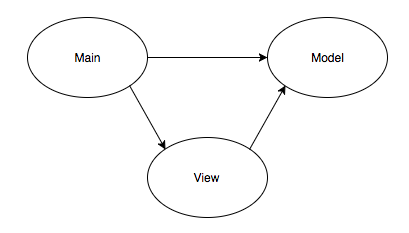Tracked here: elm/compiler#1362
This makes the "exhaustiveness" checker a little weary. You know, the thing that tells you you forgot to add a branch.
If you're facing compilation performance issues, and notice a large-ish case .. of expression, you can replace the entire expression with a Debug.crash "perf experiment" to check if that is, indeed, having a negative influence on your compilation times.
If you're pattern matching on a tuple, doing a nested case of instead may help.
case (foo, bar) of
(A, A) -> ..
(A, B) -> ..
(B, A) -> ..
(B, B) -> ..case foo of
A ->
case bar of
A -> ..
B -> ..
B ->
case bar of
A -> ..
B -> ..Note 1: the exhaustiveness checker has undergone a lot of work in preparation for the 0.19 release, and its impact on compilation times will be drastically less, once 0.19 is released.
Note 2: by using a heavily nested TEA setup, your code is bound to end up having a whole bunch of large-ish case of statements in all of those update functions. While the impact of each of those on its own won't be huge, the combination of them will make things perceivably slower to compile.
The Elm compiler can, in some cases, suffer from heavy parallelization. On CI systems like Travis and Circle CI, it's advisable to use sysconfcpu to limit to one or two cores. A secondary avenue (setting flags to influence the parallel GC settings of the haskell runtime) is also being investigated
When using webpack, you'll want to check 2 things:
maxInstancesflag; which - in the most recent version of elm-webpack-loader - is set to 1 by default. On older versions, you'll want to check if setting this to 1 has influence on your compile times.- If you're running on linux, the "multicore linux issue" may also apply. To use sysconfcpu while using
elm-webpack-loaderyou can create a wrapper script and use that as your elm-make path using?pathToMake=scripts/elm-make-wrapper
#! /bin/bash
sysconfcpus -n 2 elm-make "$@"Note that you can use a similar trick for elm-test, which also accepts a path to elm-make.
When module A imports module B, every time module B needs to be recompiled will result in module A also being recompiled. Note that this also counts for transitive dependencies. A -> B -> C (so A depends on B depends on C) means that any change to C will recompile B and A as well).
By having highly interlinked modules, that means loads of files need to be recompiled whenever any file is touched.
As far as compilation speed is concerned, a very flat module-hierarchy is what you should aim for. As an added bonus, this tends to lead to nicer code than highly-nested TEA.
In addition to the above, every extra file has some constant overhead on the compiler. If code that lives in three files, could live in a single file without impeding reusability and without making it possible to break invariants your code needs to maintain, this may just be a case of over-eagerly splitting things up.
Evan's talk is a great resource for understanding "the life of a file".
This is unlikely to play a significant role, but adding type signatures everywhere is a good idea in general.
import X exposing (..)vsimport X exposing (foo)vsimport X- probably other things but having a hard time coming up with something
Some notes on how
elm-makedecides which files to compile, i.e. the "planning" phase:The module structure in Elm can be expressed as a directed, acyclic graph. For example, consider 3 files:
These dependencies can be expressed as a graph like so:

The arrows express a dependency:
MainimportsView, soMaindepends on the API ofView. Changes to the API ofViewmay impactMain.Now, in this setup; any change to
Viewwill result in bothViewandMainbeing recompiled. Imagine I changed the signature for theviewfunction, now compilation ofMainshould fail. Similarly, changingModelrequires recompiling bothViewandMain.Conversely, changing
Maindoes not necessitate recompilingVieworModel.The first step of the planning phase is to create this graph. For each entrypoint, its dependencies are added to the graph, and this happens recursively until there are no more dependencies to add. Since cyclic imports in Elm aren't allowed, this results in a DAG.
Next step is checking if a module needs to be recompiled. A module will be added to the list of modules that need to be compiled when:
During this processing, the information is transformed into a list where each item represents a module and its "blockers" - modules imported by this module, that need to be compiled.
Compilation is then a simple process of looping through this list, searching for a module where
blockersis empty, and compiling that. After successfully compiling a module, it is removed from all blockers, and the process starts all over.(*): Since, during normal operations, a module can only be compiled after all of its dependencies have been compiled, a module whose dependencies were compiled after the module itself means something fishy happened and this module is potentially stale. Realistically, this may happen in applications with multiple entrypoints where
elm-makeis invoked several times with different entrypoints